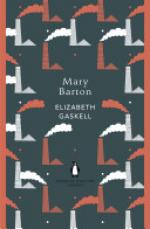|
This section contains 4,019 words (approx. 14 pages at 300 words per page) |

|
SOURCE: Clapp, Alisa M. “Texts Which Tell Another Story: Miscommunication in Elizabeth Gaskell's Mary Barton.” Michigan Academician 27, no. 1 (January 1995): 29-37.
In the following essay, Clapp examines differing levels of miscommunication in Mary Barton, including disjunction between individuals and groups in the novel, as well as between the author and the reader.
“I have tried to write truthfully …”
Elizabeth Gaskell, Preface to Mary Barton1
Though they are works of fiction, novels have historically been judged by rigorous standards of representational accuracy. Nowhere is this more true than with those works of the early Victorian period which purported to convey factual information of contemporary social issues to the masses, the so-called “industrial novels” of the 1840s and 1850s.2 The debate concerning representational accuracy flourished particularly around one such prominent novel at this time, Elizabeth Gaskell's popular Mary Barton (1848). These debates raise serious questions of a written text's ability to communicate...
|
This section contains 4,019 words (approx. 14 pages at 300 words per page) |

|


